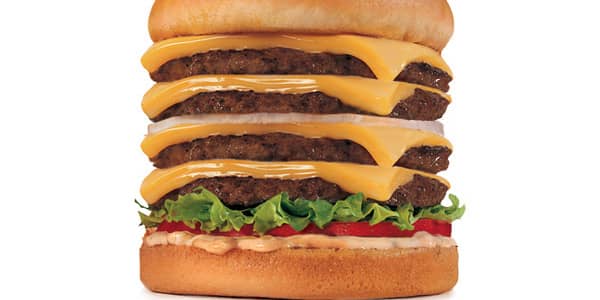Retail's Hottest Emerging Markets
Global management consulting firm A.T. Kearney takes an annual look at which emerging markets are ripe for retail expansion. Their study looks at 30 emerging countries and grades them on a number of factors including an assessment of country risk, population size, and wealth as well as its current retail saturation.
Several countries entered the ranking for the first time as more isolated markets became attractive because they help shelter retailers from the swings in global economies brought on by the recession. While retailers continue to focus on larger emerging markets such as Brazil, India and China, smaller nations such as Kuwait, Uruguay, Albania and Macedonia may offer attractive opportunities for international expansion, according to A.T. Kearney's research.
"Given the volatility of global economies, it almost is not even a choice for retailers, it is a need," said Deepa Neary, a retail industry consultant at A.T. Kearny.
Click ahead to see which countries are the most attractive to retailers.
By Christina Cheddar-Berk
Posted 21 June 2010
10. Russia
Ranking last year: 2
Population: 139,390,205 (July 2010 est.)
GDP per capita: $15,100 (2009 est.)
Although Russia took a steep dive in the rankings, the country is Europe's largest consumer market, and disposable incomes continue to rise, boosting the size of its middle class. The country's lower ranking in 2010 reflects, in part, slower GDP and retail growth rates.
Pictured: Fountain and stairs in Okhotny Ryad shopping centre, Moscow, Russia
9. Peru
Ranking last year: 18
Population: 29,907,003 (July 2010 est.)
GDP per capita: $8,600 (2009 est.)
A.T. Kearney said many people compare the Peru of today to the Chile of 10 years ago. As such it offers retailers some interesting opportunities, not to mention growth. As many of the economies of the world slid in 2009, Peru eked out positive GDP growth of 0.6 percent.
Pictured: Cusco, Peru
8. Uruguay
Ranking last year: N/A
Population: 3,510,386 (July 2010 est.)
GDP per capita: $12,700 (2009 est.)
Uruguay is South America's smallest country, but it offers retailers a good way to test the South American markets. The consumer here is very similar to those in its larger neighbors: Argentina, Brazil and Colombia.
Pictured: Tourists go shopping at "Twenty Street" in Punta del Este, one of the most exclusive seaside resorts of Latin America, 140 km from Montevideo.
7. United Arab Emirates
Ranking last year: 4
Population: 4,975,593 (July 2010 est.)
GDP per capita: $42,000 (2009 est.)
Dubai remains the region's retail hub as it offers modern infrastructure and fewer restrictions on business activities. The population also is mostly urban, wealthy, and hungry for health and beauty products as well as consumer electronics. Still, the recession took its toll, and the UAE slipped lower in the ranking this year.
Pictured: Women shopping for shoes in Dubai, UAE
6. Chile
Ranking last year: 7
Population: 16,746,491 (July 2010 est.)
GDP per capita: $14,700 (2009 est.)
Chile's economy is growing and is expected to continue to gain momentum. President Sebastin Pinera is focusing on improving the business environment, increasing investment incentives and raising annual economic growth to 6 percent. Chilean consumers are becoming increasingly interested in shopping online, which also offers retailers an interesting way to test the market, according to A.T. Kearney's retail consultants.
Pictured: Santiago, Chile skyline
5. Brazil
Ranking last year: 8
Population: 201,103,330 (July 2010 est.)
GDP per capita: $10,200 (2009 est.)
As the host of the 2014 World Cup and 2016 Olympic Games, Brazil stands to benefit from major investments in its infrastructure. Already several large commercial centers—19 shopping malls opening in 2010 alone—are planned. What's more, the recession had little impact on Brazil's economy, with GDP slipping only 0.2 percent. For 2010, growth of 4.5 to 6 percent is expected.
Pictured: Rio de Janeiro city life, State of Rio de Janeiro, Brazil.
4. Saudi Arabia
Ranking last year: 3
Population: 29,207,277 (July 2010 est.)
GDP per capita: $20,400 (2009 est.)
Saudi Arabia moves up one spot after its economy remained largely sheltered from the recession. Government regulations still constrain international retailers, and foreign investment rules require a minimum of 25 percent local capital. Despite these hurdles, the market is attractive as the country is the Gulf region's largest economy.
Pictured: Saudi women walk at a shopping mall in the Saudi capital of Riyadh
3. India
Ranking last year: 1
Population: 1,173,108,018 (July 2010 est.)
GDP per capita: $3,100 (2009 est.)
Although India slipped out of the top spot, it remains quite attractive for retailers. According to A.T. Kearney, India's GDP growth slipped 6.7 percent from 2008 to 2009, but it is expected to reach 7.2 percent from 2009 to 2010, and should be between 8 percent and 8.5 percent in subsequent years. Retailers are focusing on more profitable growth as the country's retail market matures.
Pictured: Indian shoppers walk through a Saket shopping mall in New Delhi.
2. Kuwait
Ranking last year: N/A
Population: 2,789,132 (July 2010 est.)
GDP per capita: $54,100 (2009 est.)
Kuwait makes an impressive debuts in the No. 2 spot. Although the country is small compared with some leaders in the study, the country benefits from its urbanized, wealthy consumer population. Although the country's fortunes fluctuate with the cost of oil, the government has been working to diversify its economy. But it's outlook is impressive: Kuwait's GDP per capita growth is expected to increase 49 percent by 2014.
Pictured: People inside mall in Kuwait City
1. China
Ranking last year: 3
Population: 1,330,141,295 (July 2010 est.)
GDP per capita: $6,600 (2009 est.)
China returns to the top for the first time since 2002. Chinese consumers are becoming more positive about the economy and their personal finances. And there may be good reason for that: the government's $585 billion stimulus package helped spur China's GDP growth to 8.7 percent last year, and forecasts call for growth of more than 10 percent in 2010.
The country's retail market is highly fragmented, but has been consolidating through organic growth by foreign players and through mergers and acquisitions. Those operating in the country include Wal-Mart Stores (WMT), Macy's (M), Carrefour and Germany's Metro Group, among others.
Pictured: Wangfujing shopping district, China.




